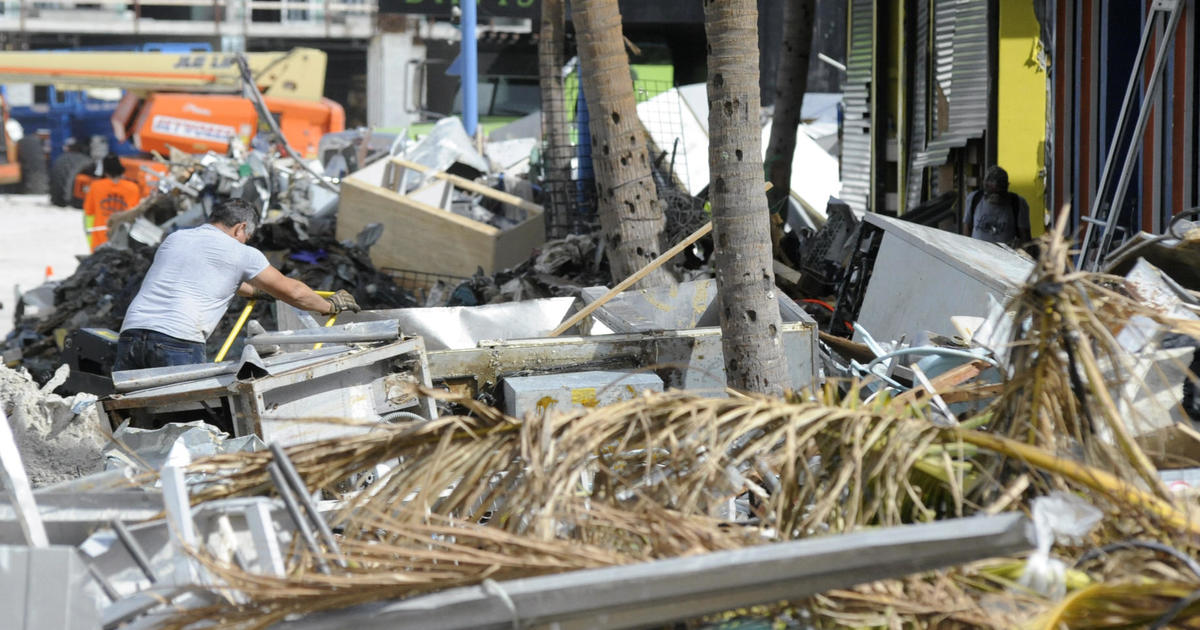Tens of thousands likely jobless after Hurricane Ian, economists say

CNN – Hurricane Ian’s devastating impact will be felt for weeks and months to come, especially in the state of Florida where much of the storm’s damage was sustained.
Economists say tens of thousands of people are likely to file for unemployment benefits in the storm’s wake, but if those workers — many in low-paying service sector industries like tourism — don’t come back, the local economies of some hard-hit areas could struggle to rebound.
Although the damage is still being tallied, early estimates indicate that Ian could be the most costly hurricane to make landfall in Florida.
The storm’s economic toll of insured losses could be between $53 billion and $74 billion, according to RMS, a Moody’s Analytics diaster-modeling firm.
In the short term, a spike in jobless claims is almost inevitable, economists say: “Hurricane Harvey in Texas prompted a rise of about 50,000 in August of 2017,” noted Mike Englund, chief economist at Action Economics.
“Certainly, there’s going to be some short-term displacement, but it’s hard to predict exactly what that will look like in the Florida context or in the Southeast more generally,” said Lynn Karoly, a senior economist at the RAND Corporation.
The biggest threat is to tourism. “Particularly in coastal communities, and within tourism how long those effects persist depends on the sector’s ability to rebuild,” Karoly said.
Low-income workers face a potential cash crunch
While big companies can at least fall back on insurance, free cash flow, or issuing debt to repair or replace damaged buildings and equipment, workers are likely to have a steeper climb back to financial stability.
“The resilience factor could be lower among the lower-wage workforce, and even their employers may also be rethinking about how they staff the positions that they need to fill,” Karoly said.
In a labor market that was historically tight pre-storm, there might be more of an impetus to replace displaced workers with machines, self-serve customer features, or other technologies.
Dave Gilbertson, vice president at HR technology firm UKG, which tracks real-time labor market metrics like time-card punches, said that in devastated Florida counties like Lee and Hillsborough, workforce activity has already plunged by nearly half — suggesting a tremendous loss of economic activity as well as earnings.
“It’s pretty uncommon to see a nearly 50% decline,” Gilbertson said.
“This is a deeper disaster than we’ve seen over the past couple of years.”
For the growing number of households whose pay isn’t keeping pace with rising prices, losing a source of income can quickly become a crisis.
“They’re losing so much personally, but they’re also losing the ability to work and support their family,” Gilbertson said. “A lot of hourly workers are living paycheck-to-paycheck [and] dealing with rising inflation by pulling down their savings and utilizing more credit cards. The ability to withstand any kind of disruption is minimal.”
Hurricane Katrina showed what worked — and what didn’t
Although parallels are frequently drawn, economists said comparisons to 2005’s Hurricane Katrina can only go so far to help predict what the aftereffects of Ian will mean for Florida’s labor market in the long term.
“There will be a significant slowdown in the job openings in the state, [but] it’s a very strong economy and hurricanes are not new to them,” said Sinem Buber, lead economist at ZipRecruiter.
Florida absorbed nearly 221,000 new residents between July 2020 and July 2021 alone, according to Census Bureau data.
The hard-hit city of Fort Myers had the sixth-fastest growth of all US cities in that time frame.
That state’s unemployment rate was 2.7%, a full percentage point below the national average.
“Katrina was a much more damaging storm, and impacted Louisiana, which is much less affluent than Florida,” Zandi said.
Relatively wealthy places like Florida generally have more resources at their disposal for rebuilding, but even there, people who live in poorer areas — who are less likely to have either adequate insurance or savings to rebuild — often just move away.
Many displaced people who migrated across the Gulf of Mexico to the Houston area in the wake of Katrina, for instance, never returned.
This exodus can permanently reshape the fabric of the local economies they leave behind.
“Hurricanes have differing economic effects, depending on whether the area is one that people are moving into or out of,” Englund said. “Hurricane recoveries tend to accelerate whatever economic transitions might have been underway when the storm hit, leaving a building surge in growing areas but economic blight in contracting areas.”
Stay or go? Workers are vulnerable either way
As climate change magnifies the intensity and frequency of extreme weather events, relocation itself can create a vicious cycle for the financial stability of lower-income households, said Adam Rose, a senior research fellow at the Center for Risk and Economic Analysis of Threats and Emergencies.
Many of the displaced residents of New Orleans who moved to Houston following Hurricane Katrina settled in the only place they could afford — on less-desirable, low-lying land that was inundated more than a decade later by 2017’s Hurricane Harvey.
Even if low-earning residents are able to rebuild their finances, they remain on figurative — if not literal — unstable ground, which suggests that an economy growing at their expense isn’t rock-solid, either.
“These low-wage jobs in tourism are not a solid economic base,” Rose said, adding that part of the blame for New Orleans’ slow post-Katrina recovery was its dependence on a sector that left residents with little resources for rebuilding.
“The fact that so much of the employment base in New Orleans is tourism has kind of reached its maximum in that vein, and that’s one reason the population growth has leveled off.”
And those who manage to stick it out might be no better off in terms of being protected from the next big storm.
“Without careful attention to climate preservation, hurricanes are poised to present significant challenges for labor markets in coastal regions of the United States,” Rushaine Goulbourne, a former research associate at the Brookings Institution, wrote in a study last year.
In this context, Florida’s population boom — a frequent boast of state lawmakers — could be contributing to the scope of the crisis, as demand grows for housing that people in low-wage service-sector jobs can afford, said Jim Blackburn, professor of environmental law and co-director of the Severe Storm Prediction, Education and Evacuation From Disasters Center at Rice University.
“There’s no replacement housing. If you don’t have an alternative safe housing for lower-income people, we’re going to continue to have this same problem over and over and over,” he said. “It’s unreasonable to develop barrier islands and not expect them to get destroyed.”



:no_upscale()/cdn.vox-cdn.com/uploads/chorus_image/image/72659922/Brickell_Water.0.jpeg)